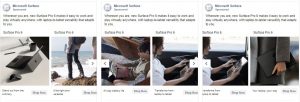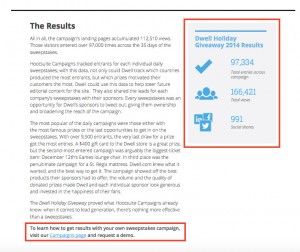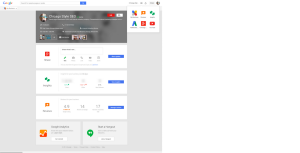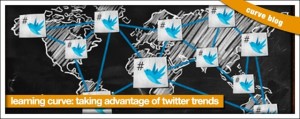Having a strong web presence is mandatory, even for small businesses just starting out. The ability to find and evaluate products and services online is crucial for all customers, and it’s your responsibility as a business owner to ensure that they can do so easily.
Before you throw a website together just for the sake of having one, take the time to educate yourself on what role a website plays in your marketing strategy and how you can optimize it to generate more leads for your business.
A great place to start is with what your customers see in their browser when they arrive at your website for the very first time. In the world of web design, this is known as your “above the fold” content, and there are a few things you can do to ensure that it generates as much value as possible for your business.
Here is an infographic on 50 features every small business website must have to be successful online.
Source: 99MediaLab.com
How To Optimize Your Site’s “Above The Fold” Content
A lot has been said about what goes on “above the fold”. The term has its origins in print media, when newspapers came folded in half, making only the top of the front page visible. This is what every potential customer saw, and it was all they had to go on when deciding whether or not to purchase the paper. Better content above the fold meant higher sales numbers.
These days it refers to the top 600 pixels of a web page, which is what most browsers render on arrival. Not every visitor will scroll down, but they’ll all see what you’ve got above the fold.
You have every reason to make sure this content is of the highest quality possible. It’s what all of your visitors will see, and you owe it to your brand to keep it highly polished. Listed below are five pieces of content that should absolutely be placed above the fold, and how they can be optimized.
Get An Appropriate Domain Name
While not strictly “rendered” by the browser, your domain name is the gateway that all of your visitors pass through. It’s in your best interest to choose one that gets your message across to customers at the earliest opportunity.
To ensure that potential customers find your website, include an industry-relevant keyword in your domain whenever possible. If you’re running an auto-repair shop, consider starting with words like “car”, “repair”, or “automotive”. Because Google and other search engines take domain names into account in their search algorithms, better keywords mean more organic traffic.
Bust A Name is a fantastic domain tool that not only lets you quickly check what domains are taken, but also automatically suggests alternative top-level domains that you might want to consider. On top of that, it automatically populates a list of different words you might want to pair with your original idea. Once you’ve found one you like, you can pick from a list of domain name providers and prices directly within the interface.
Keep Your Logo Simple
Simplicity should be your primary goal when designing a logo. Resist the urge to over-communicate by adding too many details. If you’ve landed on an idea but aren’t quite sure if you’re overdoing it, try squinting your eyes and having another look. Can you still clearly discern all of the relevant details? If not, distill the design down to its primary parts. This ensures your logo can be seen and understood even with just a passing glance.
If you’re stuck for ideas, consider your logo in one of two ways: either as an icon or as a symbol. An icon is a logo that emulates the reality of what your business does, and therefore communicates more to your prospective customers. If it’s not apparent from your brand name what industry you work in, an iconic logo can help you communicate that information up front. For example: Hubspot is a digital sales and marketing software company. They chose a series of networked nodes as their logo. Without knowing anything else about the company, viewers can understand that their business is related to connectivity.

In contrast, a symbol is an image that has nothing to do with the service you provide but instead serves as a stand-in for your brand name. You can recognize a logo as being a symbolic if it needs to be explained to anyone who has never seen it before. The best symbolic logos are made of primitive shapes and primary colours, making them easy to identify in any environment.

If you’re still hurting for inspiration, Lynda.com teamed up with Aaron Draplin to produce this fantastic video on logo design. It’s a must-see for beginners and experts alike.
Write A Clear Tagline
Your company’s tagline should be the second or third piece of content that visitors see. Crafting the perfect tagline will require a thorough understanding of your business’s marketing plan and what you consider to be your unique value proposition.
This shouldn’t just be the product or service you offer. There are plenty of other companies that do the same thing. How are you different?
- Do you put customer service above all else? (Zappos – Powered by Service)
- Do you have the absolute lowest prices? (Walmart – Save money. Live better)
- Do you cater to a higher income clientele? (Porter – Flying, Refined)
All of these are great examples of your unique “positioning”, and a tagline is the ideal opportunity to set yourself apart from the competition. Think of your tagline as a sort of “written logo”. It should be simple, recognizable, and use basic language that anyone can understand.
Include Your Phone Number
This is often overlooked in this age of digital communication. A simple phone call is still one of the most popular ways of doing business. According to a recent article, 60% of Domino’s pizza orders in the US are still conducted over the phone. It’s an old technology that has been around long enough to mature, so almost everyone has experience using it.
Email and online forms are great, but there’s still nothing more direct that a phone conversation. Keep it above the fold so that when a customer recognizes in the first few seconds that you’re the product or service for them, they can get a hold of you immediately.
Build A Clear Top Navigation Bar
Your site’s structural navigation bar is yet another piece of information that potential clients will evaluate within the first few seconds of visiting, and it’s worth taking the time to learn how to design a good one. If the solution to their problem isn’t clearly visible within the navigation bar, you run the risk of losing them.
Make sure that users don’t have to work to find what they’re looking for. As a best practice, your navigation should always be wider than it is deep, and should clearly communicate to visitors where they currently are in the site’s structure. Keep in mind that drop-downs aren’t immediately rendered, and the majority of visitors won’t see their contents.
Good to Go!
Optimizing your site’s above the fold content provides some of the highest return on investment in digital marketing. Keep your site looking sharp and ready to solve problems as soon as visitors arrive and you’ll soon find yourself doing more business with happier customers.
Digital & Social Articles on Business 2 Community(54)
Report Post








